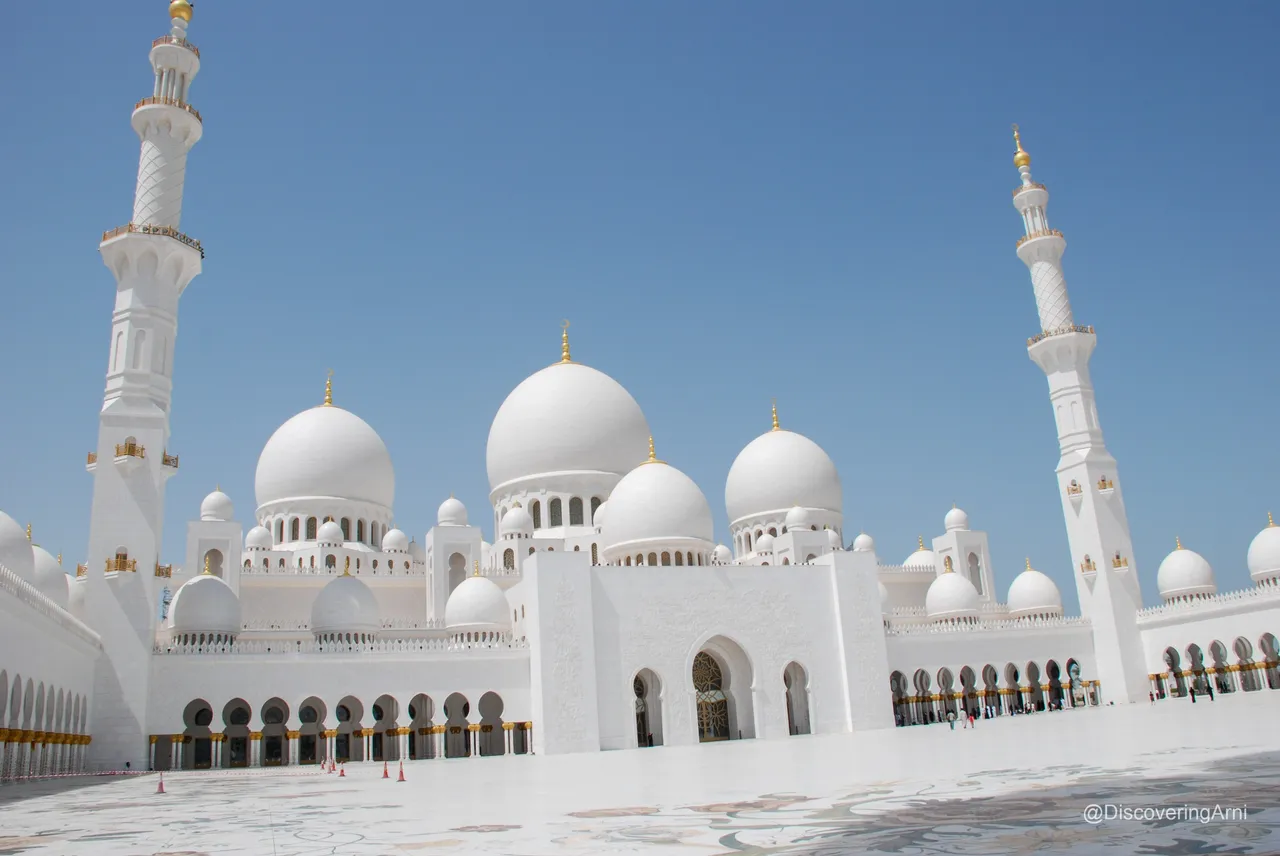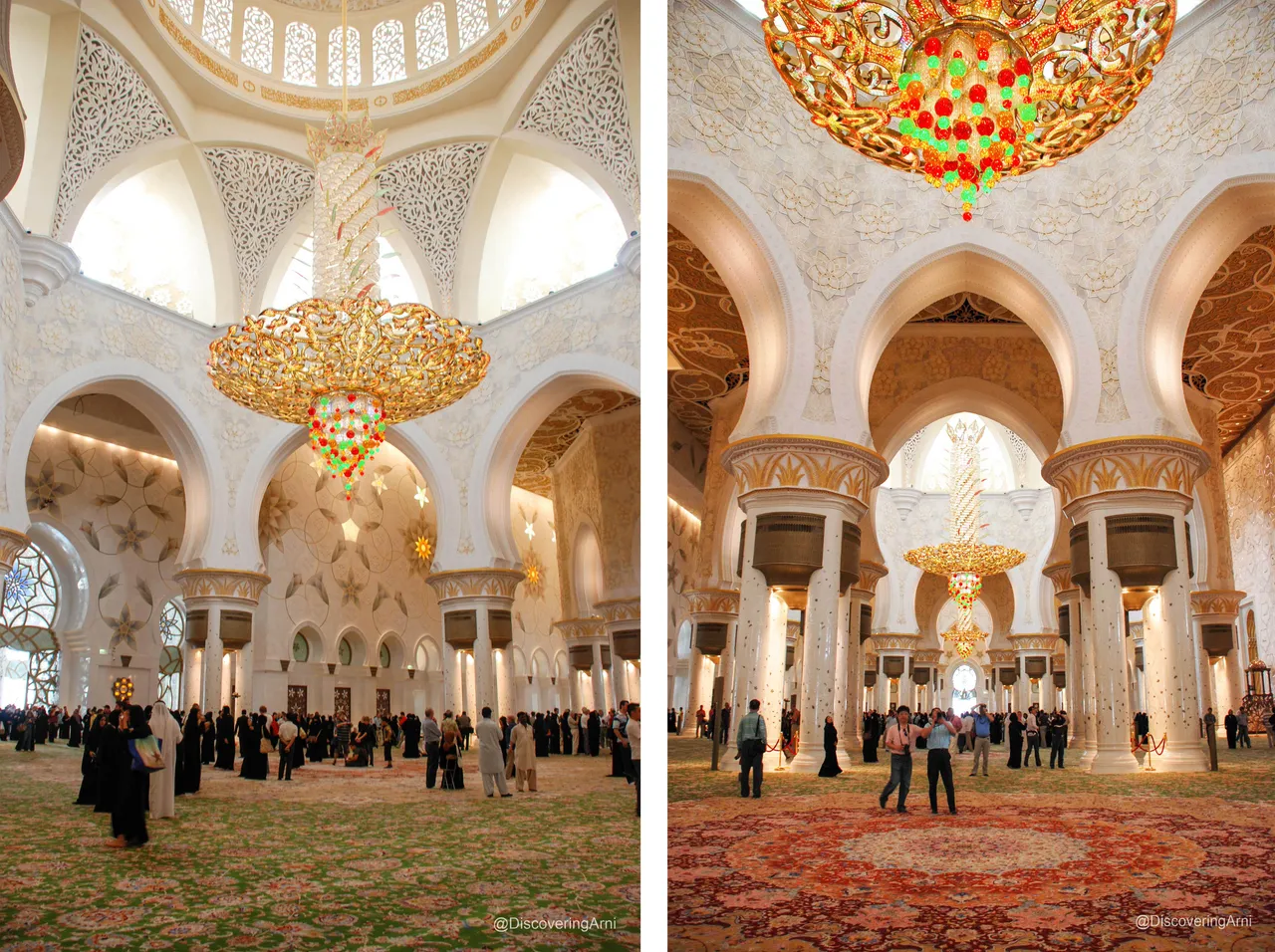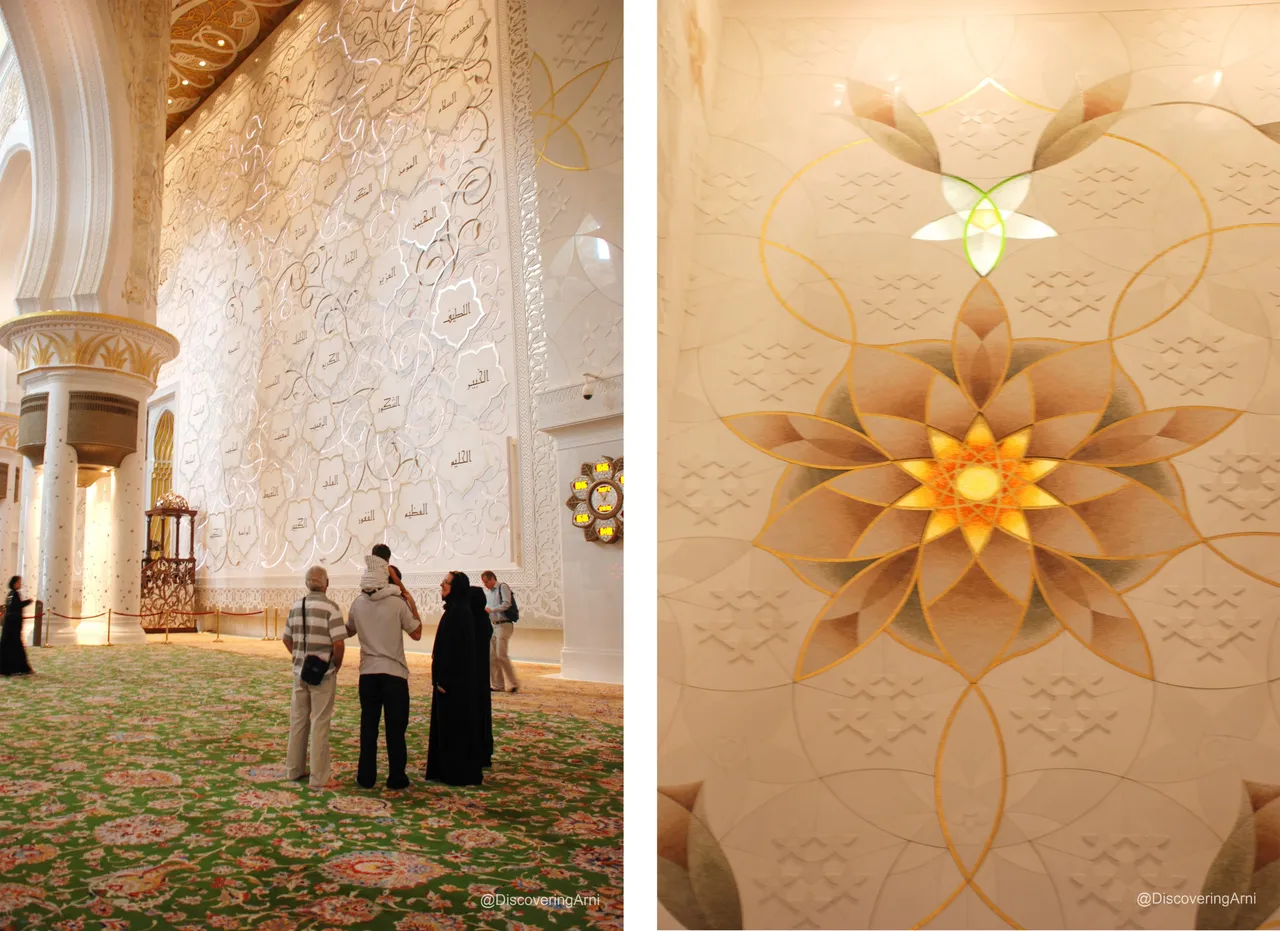
Have you ever gone inside an entrancing architecture that would lift you off your feet because of its tranquil splendor and magnificent beauty?
This jaw-dropping architectural wonder will do exactly that. Your trip to the United Arab Emirates is not complete without visiting one of the largest mosques in the world, the Sheikh Zayed Grand Mosque, located between Mussafah and Maqta Bridge in Abu Dhabi, United Arab Emirates.

The Grand Mosque is named after the founder and first president of the UAE, HH Sheikh Zayed bin Sultan Al Nahyan. This impressive place of worship is the national landmark of Abu Dhabi. It has been featured here many times but it clearly shows that this popular architectural icon is a must-see.
Planning and Design Concept
The planning and design concept of the mosque started in the late 1980s to early 1990s.
- Architect: Yousef Abdelky and Halcrow Group Consulting Engineers
- Project Consultants: Hill International
- Interior Designer: Spatium Architects, Milan
- Lighting Designer: Speirs and Major Associates, Edinburgh
Yousef Abdelky, a Syrian architect originally designed the mosque. Halcrow Group (Consulting Engineers) and Hill International (Project Consultants) completed the project after taking over in 2001. The total construction cost is equivalent to AED 2 Billion (US$ 545 Million).
It took more than 11 years to construct this gigantic mosque, which started in November 1996.


The design concept is influenced by Moorish and Arab mosques of Mughal Architecture.
The design style is a fusion of Moorish, Mughal, and Islamic Architecture.
The main dome is the largest in the world measuring 87 meters (285 feet) in height and 32.8 meters (107.6 feet) in diameter. It is made of fiber-reinforced gypsum installed by Moroccan artists.
It was built 9 meters above the street level and 11 meters above sea level.
It has 4 minarets of 107 meters height in Mameluke, Ottoman, and Fatimid styles.
There are 82 Moroccon style domes with onion-shaped crowns in white marble cladding, and crescent-shaped finials in gold-glass mosaic.
The gigantic courtyard has 1,096 columns. These marble columns are serenely reflected by the ponds that surround the arcaded courtyard. Additionally, there are 96 columns indoors.

There is a library at the north minaret. The mosque can accommodate up to 40,000 worshippers, 7,000 of which inside the main prayer hall. I was privileged to have met some colleagues that were involved in this long-term project from the manufacturers' side.
The total area is equivalent to 22,412 square meters which are said to be approximately the size of 5 football fields. The construction was finally completed in 2007.
Design Development and Material Sourcing
It's a perfect example of excellent craftsmanship using materials sourced from different parts of the world. Ceramics, gold, marble, stone, crystals, semi-precious stones, mother of pearl, and hand-woven carpet.
Outdoor Lighting
A unique lighting system was designed by lighting consultant Jonathan Speirs and Major, reflecting the different phases of the moon. The moon was their source of inspiration since the Islamic religious calendar is based on the lunar cycle.

" In the same way that the moon influences the tides, we wanted the moon had an impact on the building. The idea was to have a building that, at full moon, will light sparkling white light, but with a textural quality evocative of clouds slowly drifting in front of a full white moon… “- Jonathan Speirs, award-winning Lighting Architect and Lighting Designer of the Grand Mosque
The appearance of the building changes its appearance as it is bathed in cool white light during the full moon gradually shifting color and it gets bluer as the moon dulls.
General Interior Lighting
For its functional Lighting, hundreds of Lightcast directional luminaires, Stella spotlights, and Stella washers were hidden inside wall recesses and concealed in grooves along the edges of the ceiling.
4-5 Stories Tall Bespoke Chandeliers
What's special here as well are the giant chandeliers. Inside the main prayer hall, you will find the second world's largest chandelier.

The central chandelier measures 10 meters in diameter by 15 meters in height weighing 9 tons. Two of them measures 7 meters in diameter by 12 meters in height. There are four more that are smaller in size.
It is a suspended building on its own, the size similar to a 5-story building. Can you imagine, it is equipped with a cleaning and maintenance chamber? The bottom of the chandelier has a concealed access, an internal staircase, and built-in scaffolding platforms?

The chandeliers are illuminated by LED which would last 20 years, thus not needing much maintenance. Cleaning is required however every six months and the hidden chandelier chamber solves this problem.
The structural frame is made of stainless steel covered with a 24-carat gold plated brass. Specially fabricated crystal panels encrusted with millions of Swarovski crystals in different colors and patterns are used.
There are 7 of these chandeliers in various sizes which were manufactured by Faustig, a chandelier manufacturer in Germany. These chandeliers were said to have cost AED 30 Million (US$ 8.17 Million).

Largest Carpet in the World
The carpet in the prayer hall is said to be the world's largest hand-knotted carpet in the world designed by Iranian artist, Ali Khaliqi. It was produced by 1,200 artisans in small villages in Iran. The carpet is made of wool and cotton imported from New Zealand and Iran with a total area of more than 5,000 sq. meters. It took approximately 2 years to finish its fabrication.
Qibla Wall
There is a large back-lit Qibla wall, a prayer wall that faces Mecca. It is 23 meters in height and 50 meters in width with 99 names of God (Allah) written in traditional calligraphy as marble inlays illuminated by efficient fiber optics systems.
 (From Left to Right) Qibla Wall and marble inlay in the floral pattern
(From Left to Right) Qibla Wall and marble inlay in the floral pattern
Marble
28 different types of marble were used, sourced from:
- SIVEC from Greece and Macedonia for the external cladding,
- Lasa, Aquabiana, and Biano from Italy,
- Makrana from India, and
- East White and Ming Green China
Columns were built with marble, inlaid with semi-precious stones and mother of pearl.


Special glass artwork using modern technology and marble in-lays
Despite the number of curious tourists visiting the mosque, there was an ethereal quality to the experience of being there.
Visiting the Mosque
There is no entrance fee. It is open to all except during Friday gatherings, Eid Prayers, and Ramadan. Opening hours to visit would be between 9:00 AM to 10:00 PM (last entry at 9:30 PM) from Saturdays to Thursdays. It is open from 4:30 PM to 10:00 PM on Fridays.

Proper Conduct and Dress Code:
Visiting the mosque is a solemn experience. The visitors are expected to observe proper conduct and dress code. The women must wear long trousers or skirts with long-sleeved shirts. No tight-fitting clothes. The hair for women should be covered so headscarves are important but not to worry, there is an area dedicated to women where you can borrow a black cloak called "abaya" and veil.

Tip: Don't forget to wear your sunglasses during the day. It gets pretty bright.
Definitely no shorts for men. The dress code is either a white dish-dash, a long white robe traditionally worn by Emirati men that you can borrow if you feel like wearing one or long trousers with decent shirts.
Footwear is left outside the entrance hall. Wear something comfortable and easy to remove so be prepared to walk either barefoot or with your socks on.
No smoking, eating, and drinking within the premises. Everyone is asked to leave during prayer times that usually start at 2 PM.
My Takeaway

Sheikh Zayed Bin Sultan Al Nahyan Mosque is currently the third-largest mosque in the world. I have visited it countless times to play tour guide to friends and family who came to see us. From Dubai, 1 1/2 to 2 hours depending on how fast you drive to reach Sheikh Zayed Grand Mosque.
Putting on the traditional black cloak - abaya was an experience in itself as well, our own way of respecting the country's religion and culture. Photography is allowed within and outside the mosque except in a few restricted areas. It's also stunning to see at night with its carefully planned and beautifully designed lighting.

For a day trip visit to Abu Dhabi, I took guests there out of habit first in the morning since it's on the way from Dubai before reaching Abu Dhabi. This is followed by a quick lunch and stroll by the waterfront at Souk Qaryat Al Beri across Khor Al Maqta before heading to the center of Abu Dhabi. It allows us to see it with its lights on the way back to Dubai at night.
Otherwise, a sunset tour is also highly recommended.
All of the design elements used in the architecture and interior of this majestic place of worship harmoniously evokes a sense of calm and contemplation.
Have you visited this spectacular mosque? How was your experience?
References:
Inspired by my original post
Sheikh Zayed Mosque Wikipedia
Dubaifaqs.com - Sheikh Zayed Mosque
Speirs and Major Lighting Design of Grand Mosque in Abu Dhabi
Faustig Creates Record Chandelier
